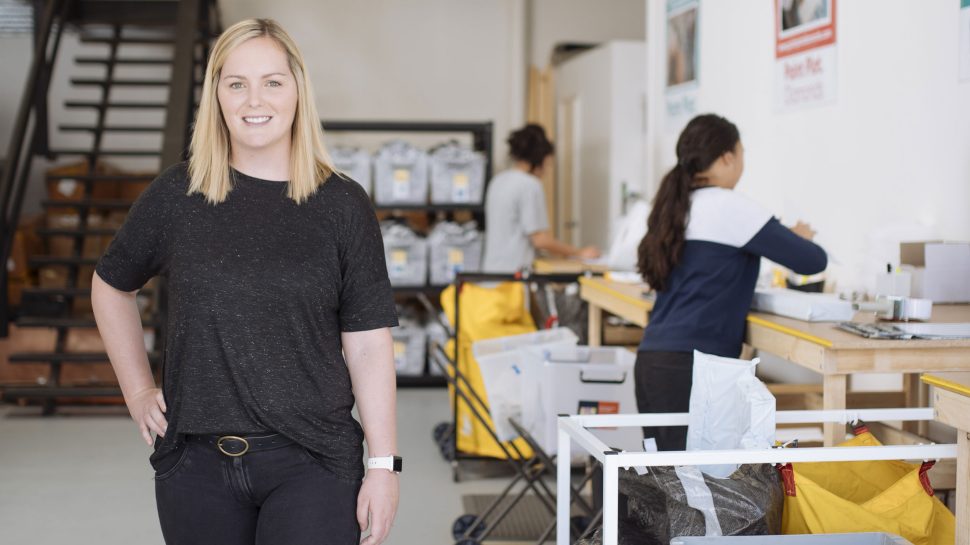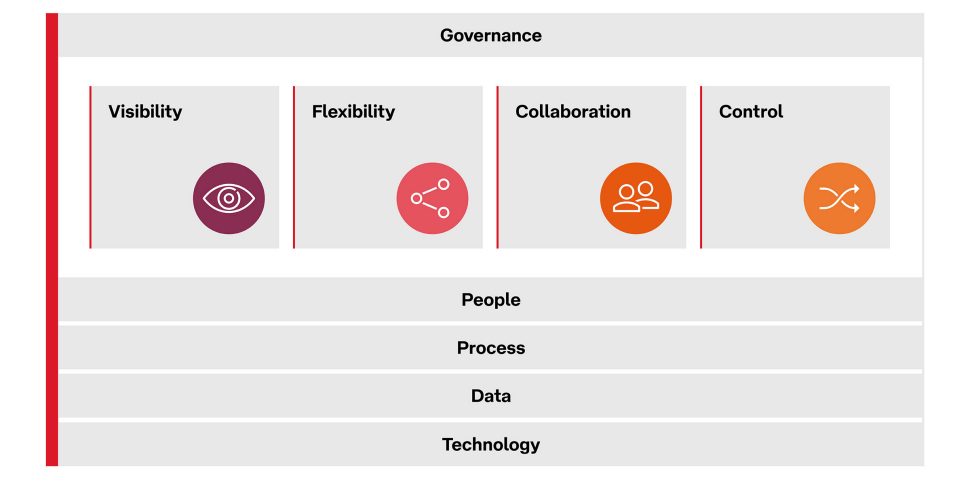Supply chain resilience: four pillars to support growth
From bushfires to a global pandemic, supply chains have been put under enormous pressure this year. Disruption to its global supply chain forced Paint Plot to completely re-think how they manage online orders. Co-owner, Rebecca Keogh, shares how moving fulfilment and distribution to Australia gave them more control and visibility.

Key points
- The pandemic has disrupted global supply chains.
- An agile and resilient supply chain requires visibility, flexibility, collaboration and control.
- Paint Plot improved control and visibility when it brought distribution to Australia.
In a year like no other, many businesses have been under pressure to respond to external shocks – from bushfires to a global pandemic . This has in turn strained supply chains, forcing many to completely re-think the way they procure and store products, and fulfil and deliver orders to customers.
Smaller businesses have certainly faced this challenge. Australia Post research indicates more than one in five businesses have experienced disruptions in their supply chain – with businesses with less than 20 employees experiencing a greater impact.1
Together, Australia Post and Deloitte have produced a white paper examining some important considerations when assessing your supply chains. Supply Chain Resilience: Building confidence through a risk intelligent approach to supply chain management (PDF 7.2MB), shares a framework built on four pillars: visibility, flexibility, collaboration and control.
One small business – Paint Plot – leaned on these four elements to change course when COVID-19 hit.
Going global from Australia
Before the pandemic, Paint Plot had an established customer base in the US and business was humming. They were shipping their paint by numbers kits directly to customers, from their overseas suppliers’ warehouses. But the pandemic quickly disrupted Paint Plot’s global supply chains, threatening the viability of the business. This prompted Rebecca Keogh, and her business partners, to change their whole supply chain model.
“When the pandemic hit, international deliveries came to a grinding halt,” explains Rebecca. “It was very sudden and very unpredictable. Things went wrong really fast. But people – especially in the US – were buying more online.”
Paint Plot was dealing with the twin challenges of this black swan event. On the one hand, the entire global supply chain had been brought to its knees:1 planes were grounded, cities were locked down. But at the same time, demand was growing. People were anxious and self-isolating. They turned to paint by numbers kits to de-stress, disconnect from the news, and even stay connected with friends through Zoom painting parties.2
Paint Plot had an opportunity to grow sales – if they could create a more agile supply chain.
“We’ve found that as soon as customers place their order, they’re so excited to get their painting kit,” explains Rebecca. “But there were massive delays in international distribution, particularly processing times within the US. Customers were getting frustrated because there were a lot of problems with tracking and visibility.”
Rebecca needed more control of their supply chain and decided to manage it all from Paint Plot’s Australian warehouse.
The four pillars of resilience
Rebecca’s ability to quickly pivot and take control of Paint Plot’s supply chain was vital in helping the business adapt to the disruption caused by the pandemic. That control is one of the four key pillars within a resilient and agile supply chain framework, according to Deloitte’s analysis.1
Diagram: Resilient Supply Chain Framework

Resilient Supply chains are characterised by four key pillars: visibility, flexibility, collaboration and control; and supported by a clearly defined governance structure, enabled by people, processes, data and technology.
First comes visibility – being able to track key events as they happen so you can deal with any issues before they become business-critical. This was a primary concern for Rebecca – she needed better tracking visibility of her orders.
Paint Plot also needed the flexibility to adapt to new opportunities – new markets such as New Zealand, and the growing number of word-of-mouth referrals her business was experiencing.
Collaboration is vital for businesses of any size – but particularly for a small business like Paint Plot, which has limited time and resources. Rebecca says her Australia Post account manager has been an invaluable support – even helping her team reconfigure the expanded warehouse space to optimise their fulfilment process.
And finally, control. The systems and processes to ensure you can manage the end-to-end process, and adapt without blowing out operational costs or creating new risks.
Australia Post’s support with pre-sorting processes, including the supply of a mobile bag holder that could be moved between workstations, made it easier for Paint Plot to quickly create a robust and scalable fulfilment process.
“We decided to change our entire supply chain for our US business very quickly, and bring our products into our warehouse in Australia,” says Rebecca. Despite having only commenced Australian distribution at the beginning of 2020, she felt confident delivering every order – nationwide and overseas – with Australia Post.2
Tracking is the key to confidence
Rebecca understands that delays are sometimes unavoidable. But she explains, “What our customers really want is to know how their Paint Plot delivery is progressing. And Australia Post’s tracking from Australia Post has allowed us to provide that visibility,” she says.
She says that when tracking is selected, things like automated SMS alerts to her domestic customers can provide reassurance. International customers may be able to enter a tracking ID online to see where their paint-by-numbers kit is – from pick-up and airport through to customs – giving them more confidence in their delivery.
Rebecca is now optimistic about the potential of her business. “We’ve had businesses send painting kits to their teams, perhaps in lieu of an end-of-year celebration or as a way to connect teams via video chat. And we hope people see our kits as a good gift option this Christmas, especially if they can’t be together in person.”
Having more control and flexibility within her supply chain gives Rebecca confidence that she can manage growing demand. “Even if things are unpredictable, the relationship we have with Australia Post means we have more certainty we can move forward,” she says.
Resources to help you adapt your business
Australia Post has partnered with Deloitte to create two useful guides providing insights and tips on navigating the changing eCommerce landscape.
The practical workbook and white paper have been built on four key pillars: visibility, flexibility, collaboration and control. These have been designed to help you understand the key to resilient supply chains, build a framework for managing risk, lay the foundation for growth after COVID-19 and more.
1 Supply Chain Resilience, Building confidence through a risk intelligent approach to supply chain management, Deloitte Touche Tohmatsu and Australia Post, September 2020
2 Paint Plot helps Aussies paint their way through the pandemic, Australia Post, September 2020
3 Australia Post Annual Report 2019
4 Australia Post’s Salesforce data –FY19 Revenue, number of customers trading greater than $0
This article is provided for general information purposes only and is not intended to be specific advice for your business needs.



